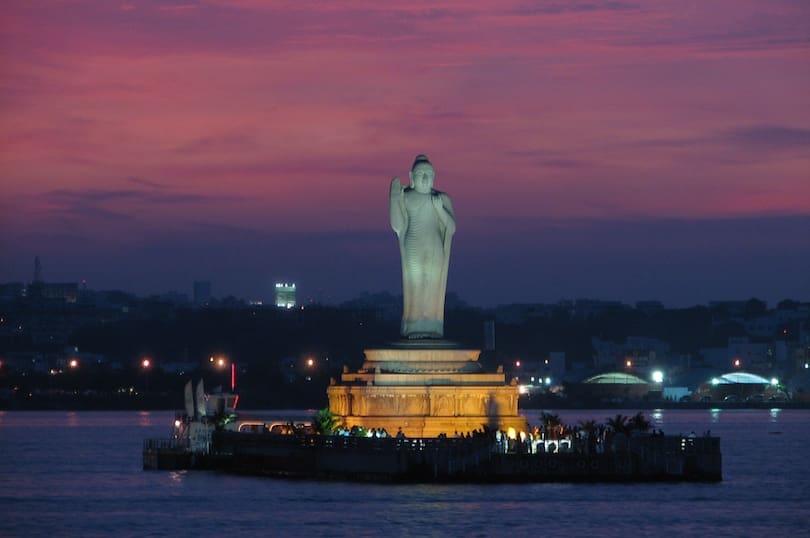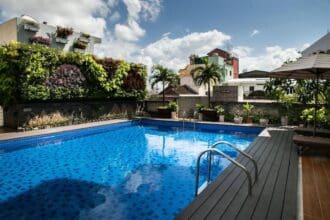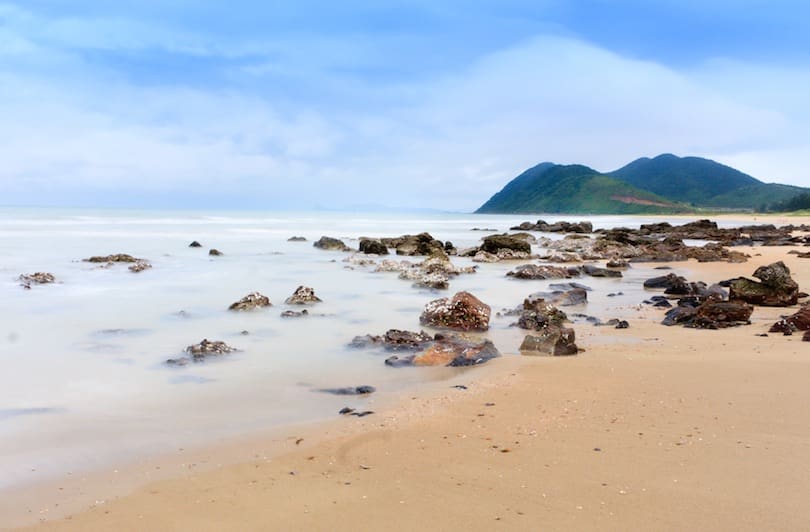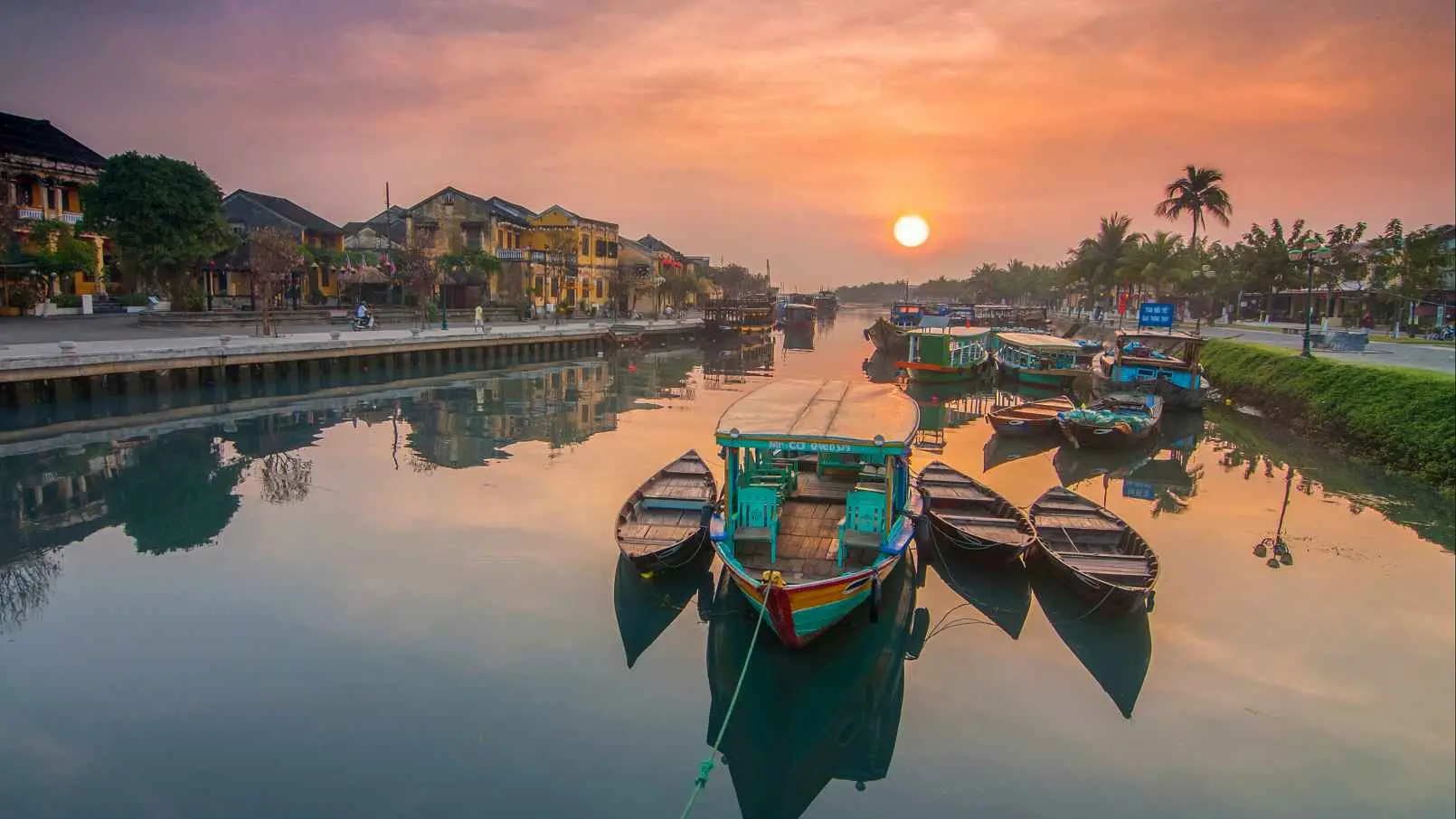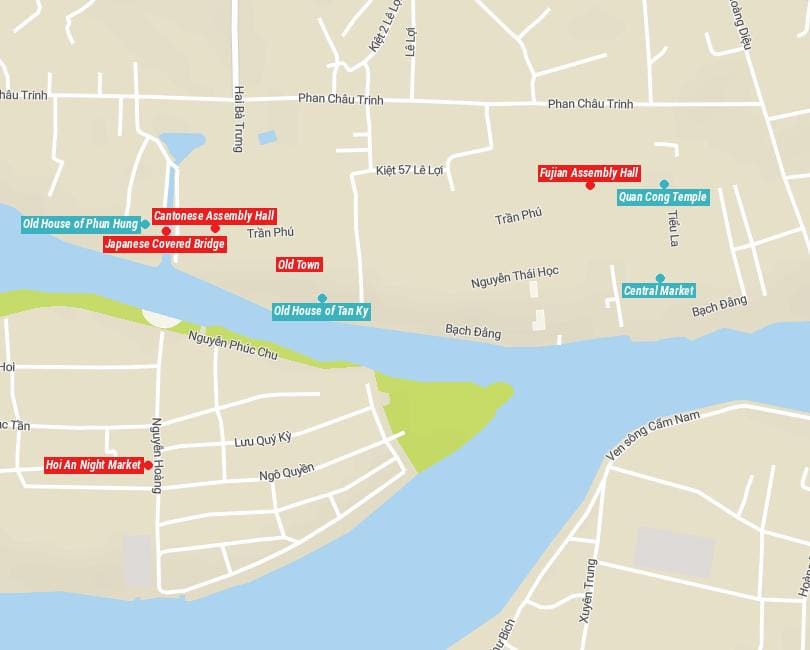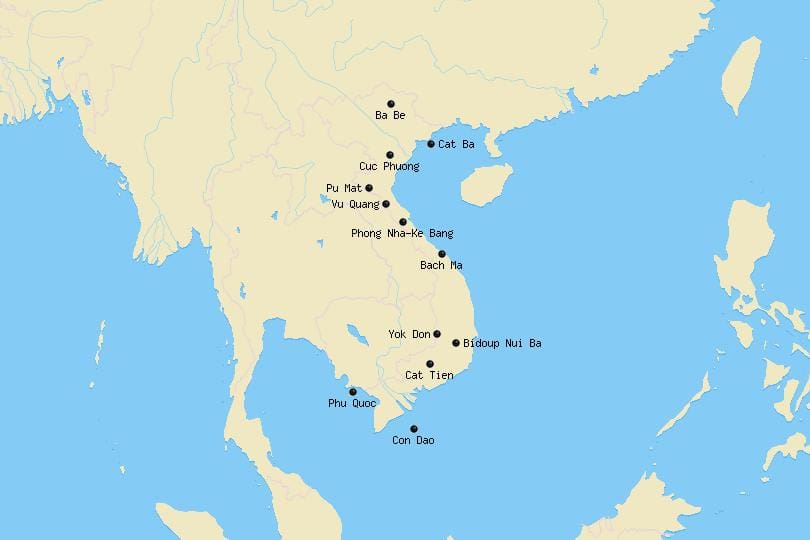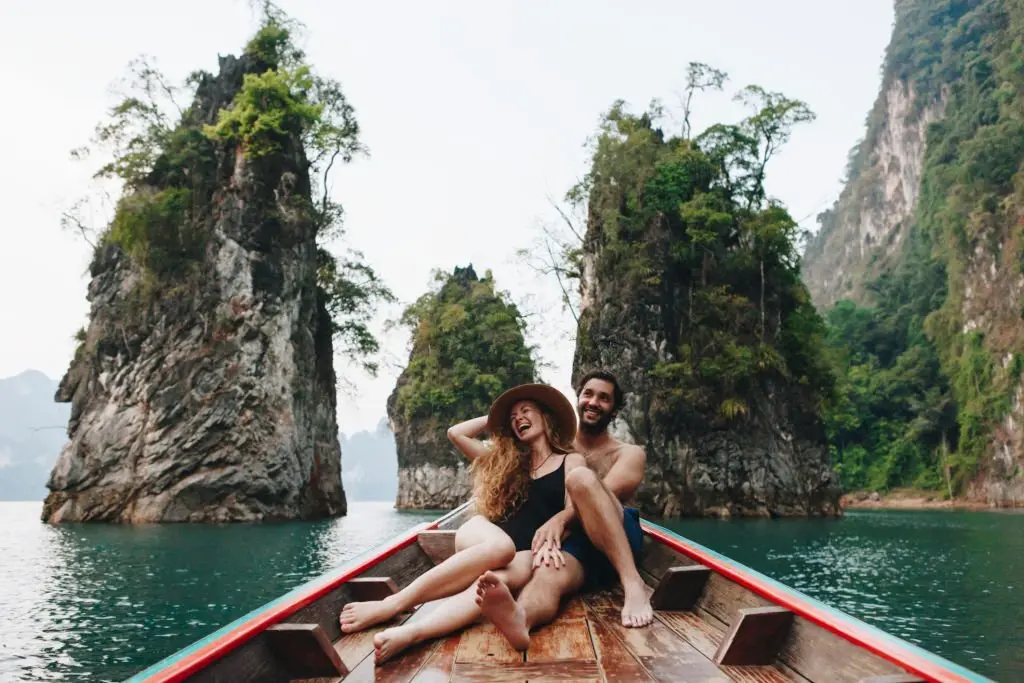Vietnam, a country brimming with natural beauty, rich history, and vibrant culture, offers countless opportunities for exploration. While its bustling cities like Hanoi, Ho Chi Minh City, and Da Nang are must-visit destinations, some of the most memorable experiences can be found just beyond their borders. Whether you’re seeking serene landscapes, cultural immersion, or thrilling adventures, these five best day trips in Vietnam will take your journey to the next level. Let’s dive into the details of each destination, ensuring you make the most of your time in this enchanting country.
1. Ha Long Bay from Hanoi: A Journey Through Timeless Beauty
Why Visit Ha Long Bay?
Ha Long Bay, a UNESCO World Heritage Site, is one of Vietnam’s most iconic attractions. Located approximately 170 kilometers east of Hanoi, this bay is renowned for its emerald waters and thousands of towering limestone karsts draped in lush greenery. A day trip here offers a perfect blend of relaxation and adventure. The name “Ha Long” translates to “Descending Dragon,” inspired by ancient Vietnamese legends that describe dragons descending from heaven to protect the land from invaders.
How to Get There
- By Bus : Numerous bus operators run direct services from Hanoi to Ha Long Bay, taking around 3-4 hours. Luxury buses equipped with air conditioning, Wi-Fi, and reclining seats ensure a comfortable ride.
- By Private Car : Hiring a private car provides flexibility and comfort, especially if you’re traveling with family or friends. Drivers often double as guides, sharing insights about local culture and history along the way.
- By Seaplane : For a luxurious experience, consider taking a seaplane from Hanoi, offering breathtaking aerial views of the bay. This option is ideal for those short on time or looking to splurge on a unique perspective.
Activities to Enjoy
- Cruise Tours : Opt for a half-day or full-day cruise to explore the bay’s hidden caves, floating villages, and secluded beaches. Most cruises include meals, allowing you to savor fresh seafood while admiring the stunning scenery.
- Kayaking : Paddle through calm waters and discover hidden lagoons inaccessible by larger boats. Kayaking is particularly popular among adventurous travelers eager to get up close to the karsts.
- Sung Sot Cave (Surprise Cave) : Visit this massive cave filled with stunning stalactites and stalagmites. Guided tours explain how these formations developed over millions of years.
- Titov Island : Climb to the summit for panoramic views of the bay or relax on its pristine beach. Named after Russian astronaut Gherman Titov, who visited during the Soviet-Vietnamese friendship era, the island is a favorite spot for photography enthusiasts.
Travel Tips
- Book your tour in advance, as Ha Long Bay is a popular destination, especially during weekends and holidays.
- Bring sunscreen, a hat, and swimwear for water-based activities. Sunglasses and a lightweight scarf can also help shield against strong winds during boat rides.
- Avoid visiting during peak tourist seasons (June-August) to enjoy a quieter experience. Early morning departures are recommended for cooler temperatures and fewer crowds.
2. Cu Chi Tunnels from Ho Chi Minh City: A Glimpse into Vietnam’s History
Why Visit Cu Chi Tunnels?
The Cu Chi Tunnels, located about 70 kilometers northwest of Ho Chi Minh City, offer a fascinating insight into Vietnam’s wartime history. This intricate network of underground tunnels was used by Viet Cong soldiers during the Vietnam War and remains a powerful symbol of resilience. Stretching over 250 kilometers, the tunnels served multiple purposes, including shelter, storage, and communication hubs.
How to Get There
- By Bus : Public buses depart regularly from Ho Chi Minh City, taking approximately 1.5-2 hours. These buses are affordable but may lack amenities like air conditioning.
- By Private Tour : Many guided tours include round-trip transportation, meals, and expert commentary. This option is highly recommended for first-time visitors unfamiliar with the area.
- By Motorbike : For adventurous travelers, renting a motorbike allows you to explore rural Vietnam en route. However, navigating busy highways requires confidence and experience.
What to Expect
- Tunnel Exploration : Crawl through narrow passages to experience life underground firsthand. Some sections have been widened for tourists, but others remain authentic and challenging.
- War Remnants Museum : Learn about the tunnel system’s role in military strategy and daily survival. Exhibits feature weapons, traps, and personal belongings of soldiers.
- Shooting Range : Test your aim with authentic wartime weapons (optional activity). While controversial, this attraction appeals to history buffs interested in handling vintage firearms.
- Local Cuisine : Sample cassava, a staple food for soldiers during the war. Simple yet filling dishes highlight the resourcefulness of those living under harsh conditions.
Travel Tips
- Wear comfortable clothing and shoes suitable for crawling through tunnels. Knee pads and gloves can be rented on-site for added protection.
- Carry insect repellent, as mosquitoes can be prevalent in the area. Rain gear is also advisable during the monsoon season.
- Choose a guided tour to gain deeper insights into the tunnels’ historical significance. Guides often share personal stories and anecdotes that bring the past to life.
3. Ba Vi National Park from Hanoi: Nature’s Retreat
Why Visit Ba Vi National Park?
Just 50 kilometers west of Hanoi lies Ba Vi National Park, a haven for nature lovers and outdoor enthusiasts. With its misty mountains, dense forests, and cascading waterfalls, this park offers a refreshing escape from the city’s chaos. Established in 1991, Ba Vi spans over 7,000 hectares and is home to diverse ecosystems, including tropical rainforests and alpine meadows.
How to Get There
- By Bus : Public buses operate from Hanoi to Ba Vi town; from there, hire a taxi or motorbike to reach the park. Buses are economical but require additional transfers.
- By Private Car : A private vehicle ensures convenience and flexibility for exploring the park’s various trails. Drivers familiar with the area can recommend lesser-known spots worth visiting.
- By Cycling Tour : For fitness enthusiasts, cycling tours from Hanoi to Ba Vi provide an exhilarating challenge. Routes pass through picturesque countryside, offering glimpses of rural life.
Activities to Enjoy
- Hiking : Trek to the summit of Ba Vi Mountain (1,296 meters) for stunning views of the surrounding countryside. Trails range from easy walks to strenuous climbs, catering to all skill levels.
- Waterfall Visits : Explore Ao Vua Waterfall and Thien Son Waterfall, both ideal for swimming and picnicking. Natural pools at the base of the falls create inviting spots for cooling off.
- Hot Springs : Relax in the park’s natural hot springs after a long hike. Mineral-rich waters are believed to have therapeutic properties, making them a popular post-trek activity.
- Wildlife Spotting : Keep an eye out for macaques, civets, and a variety of bird species. Birdwatchers will appreciate the park’s avian diversity, which includes rare and endemic varieties.
Travel Tips
- Start early to maximize daylight hours for hiking and other activities. Trails can become slippery after rainfall, so sturdy footwear is essential.
- Pack snacks and water, as facilities within the park may be limited. Energy bars and electrolyte drinks are helpful for maintaining stamina during hikes.
- Hire a local guide for challenging treks to ensure safety and navigation assistance. Guides are knowledgeable about trail conditions and potential hazards.
4. My Son Sanctuary from Hoi An: A Step Back in Time
Why Visit My Son Sanctuary?
Located about 40 kilometers southwest of Hoi An, My Son Sanctuary is a UNESCO World Heritage Site that showcases the architectural legacy of the Champa Kingdom. This ancient Hindu temple complex dates back to the 4th century and is steeped in spiritual significance. Once the religious and political center of the Cham civilization, My Son features intricately carved stone structures dedicated to deities like Shiva.
How to Get There
- By Taxi/Private Car : The drive takes approximately 1 hour, allowing you to enjoy scenic countryside views along the way. Private transfers are convenient for groups or families traveling together.
- By Guided Tour : Most tours from Hoi An include transportation, entrance fees, and knowledgeable guides. Group tours are cost-effective and eliminate the hassle of planning logistics.
- By Bicycle : For a more immersive experience, cycle through rural villages to reach the sanctuary. Cycling allows you to interact with locals and observe traditional farming practices.
Highlights of My Son
- Temple Ruins : Marvel at intricately carved stone structures dedicated to Shiva and other deities. Each temple tells a story about the Cham people’s beliefs and artistic achievements.
- Cultural Performances : Watch traditional Cham dances performed near the ruins. Dancers wear elaborate costumes and reenact rituals passed down through generations.
- Museum : Gain context about the site’s history through artifacts and exhibits. Displays include pottery, sculptures, and tools recovered during archaeological excavations.
- Photography Opportunities : Capture the mystical ambiance of the temples amidst lush vegetation. Early morning visits provide soft lighting ideal for photography.
Travel Tips
- Arrive early to avoid crowds and midday heat. Temperatures can soar, so plan accordingly.
- Dress modestly, as My Son is a sacred site. Cover shoulders and knees out of respect for local customs.
- Bring cash for souvenirs and refreshments, as card payments may not be accepted. Small shops sell handmade crafts and snacks.
5. Phong Nha-Ke Bang National Park from Dong Hoi: Underground Wonders
Why Visit Phong Nha-Ke Bang?
Phong Nha-Ke Bang National Park, located near Dong Hoi in central Vietnam, is a paradise for adventurers and spelunkers. Home to some of the world’s largest caves, including Son Doong and Paradise Cave, this UNESCO-listed park boasts unparalleled geological wonders. Formed over millions of years, the karst landscape features dramatic cliffs, deep valleys, and extensive cave systems.
How to Get There
- By Shuttle Bus : Regular shuttles connect Dong Hoi to the park’s main attractions. Buses are scheduled to coincide with tour timings, ensuring seamless transitions.
- By Private Transfer : Arrange a driver for a hassle-free visit to multiple sites within the park. Private vehicles allow you to customize your itinerary based on interests and energy levels.
- By Train + Taxi : Take a train to Dong Hoi and then hire a taxi to reach the park. Trains offer scenic views of Vietnam’s coastline, adding charm to the journey.
Top Attractions
- Paradise Cave : Walk through this colossal cave adorned with dazzling stalactites and stalagmites. Wooden walkways make navigation easy, even for novice explorers.
- Phong Nha Cave : Board a boat to explore this riverine cave system. Passages lead to chambers illuminated by natural light, creating surreal visuals.
- Dark Cave Adventure : Zipline, kayak, or mud-bathe in this unique cave experience. Mud baths are said to have rejuvenating properties, drawing comparisons to spa treatments.
- Botanical Gardens : Stroll through lush gardens showcasing native flora. Interpretive signs provide information about plant species and their ecological roles.
Travel Tips
- Allocate sufficient time for each attraction, as distances between sites can be significant. Multi-day tours are available for those wishing to delve deeper into the park’s offerings.
- Wear sturdy shoes and bring a flashlight for cave exploration. Waterproof bags protect electronics from moisture inside caves.
- Consider booking a multi-day tour if you wish to visit remote caves like Hang En or Son Doong. These expeditions require permits and advanced planning.
Other Day Trip Ideas in Vietnam
While the above five destinations are standout choices, Vietnam has much more to offer for day trippers:
- Ninh Binh from Hanoi : Known as “Halong Bay on Land,” Ninh Binh features stunning rice paddies, limestone cliffs, and ancient temples. Popular stops include Tam Coc, Trang An, and Bai Dinh Pagoda.
- Mui Ne Sand Dunes from Phan Thiet : Experience desert-like landscapes with sandboarding and ATV rides. White Sand Dunes and Red Sand Dunes attract photographers and thrill-seekers alike.
- Tam Coc from Ninh Binh : Cruise along the Ngo Dong River surrounded by dramatic karst formations. Rowboats operated by local women provide an authentic touch to the experience.
- Da Lat Flower Gardens from Da Lat : Admire colorful blooms and picturesque lakes in this romantic hill station. Highlights include Crazy House, Linh Phuoc Pagoda, and Xuan Huong Lake.
- Con Dao Islands from Vung Tau : Escape to pristine beaches and turquoise waters for snorkeling and diving. Historical sites like Con Dao Prison add depth to the island’s appeal.
Conclusion
Vietnam’s diverse landscapes and rich heritage make it a dream destination for day trips. From the ethereal beauty of Ha Long Bay to the historical depths of Cu Chi Tunnels, each excursion offers a unique perspective on this captivating country. By venturing beyond the usual tourist hubs, you’ll uncover hidden treasures that enrich your travel experience. So pack your bags, lace up your boots, and embark on these unforgettable journeys to create memories that last a lifetime.
FAQs About Day Trips in Vietnam
- What is the best time to take day trips in Vietnam?
- The dry season (November to April) is ideal for most destinations due to favorable weather conditions. Northern regions like Ha Long Bay and Ba Vi are best visited during spring, while southern areas like Mui Ne thrive in winter.
- Are guided tours necessary for day trips?
- While not mandatory, guided tours enhance the experience by providing valuable insights and logistical support. They are particularly beneficial for first-time visitors unfamiliar with local customs and geography.
- Is it safe to travel alone on day trips in Vietnam?
- Yes, Vietnam is generally safe for solo travelers, but always exercise caution and stay informed about local conditions. Stick to well-marked paths in parks and avoid isolated areas after dark.
- How much do day trips typically cost?
- Costs vary depending on the destination and mode of transport, ranging from $20-$100 per person. Budget options include public buses and self-guided excursions, while luxury tours offer premium amenities.
- Can I customize my itinerary for day trips?
- Absolutely! Many operators offer tailored packages based on your preferences. Customization allows you to focus on specific interests, such as history, nature, or adventure.
- Do I need visas for domestic travel in Vietnam?
- No, domestic travel within Vietnam does not require additional visas. Ensure your passport is valid for the duration of your stay.
- Are meals included in day trip packages?
- Some tours include meals, while others leave dining options open-ended. Check details before booking to avoid surprises. Local eateries along the way often serve delicious Vietnamese cuisine.
- What should I pack for day trips?
- Essentials include sunscreen, insect repellent, comfortable clothing, and a reusable water bottle. Hats, sunglasses, and lightweight scarves protect against sun exposure.
- Is English widely spoken at tourist sites?
- Yes, English is commonly understood at major attractions, though learning basic Vietnamese phrases is appreciated. Guides and staff in popular areas are usually bilingual.
- Can I book day trips online?
- Yes, numerous platforms allow online bookings, ensuring convenience and peace of mind. Websites like Klook, GetYourGuide, and Viator offer reviews and ratings to help you choose reputable operators.

